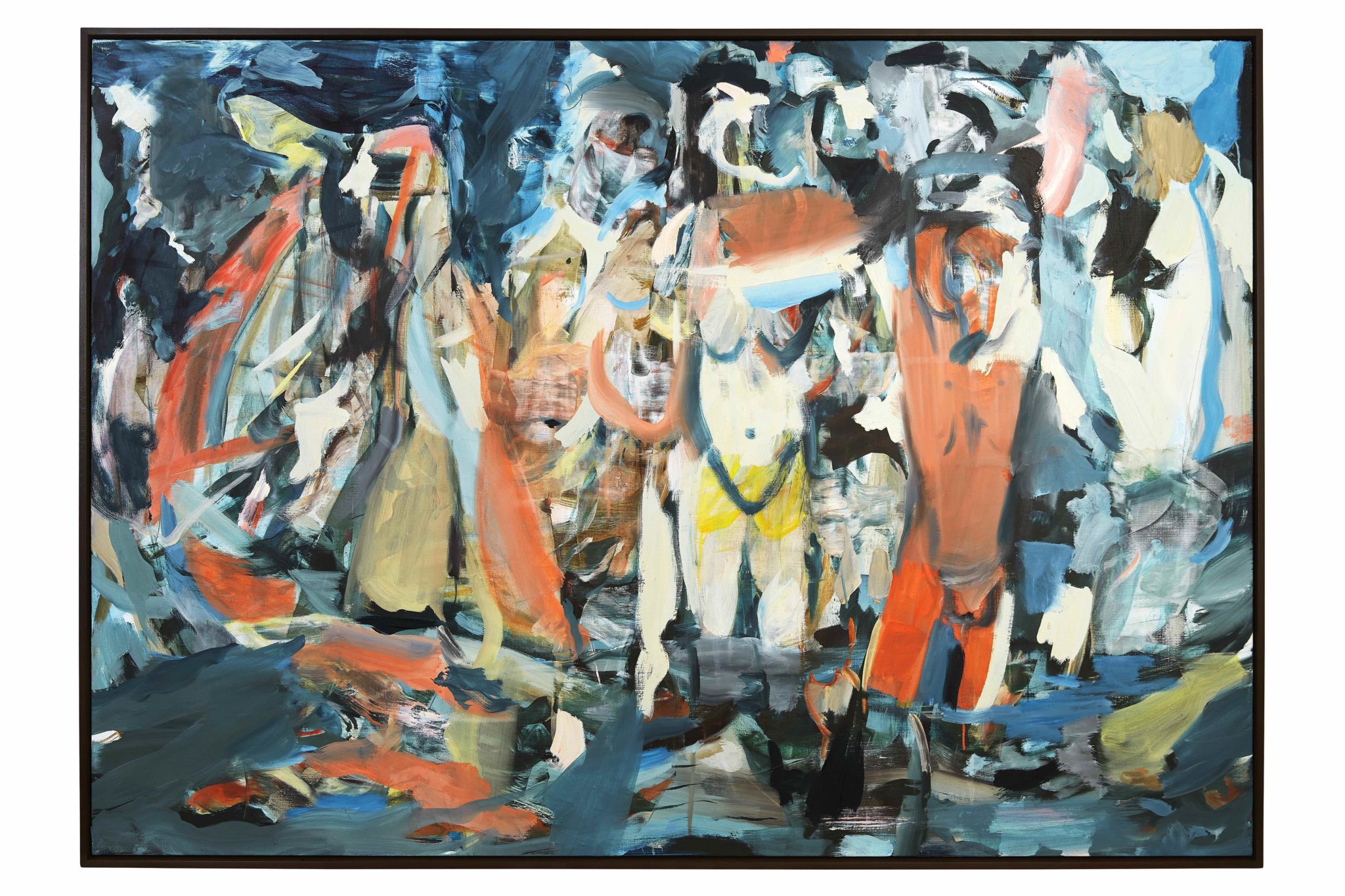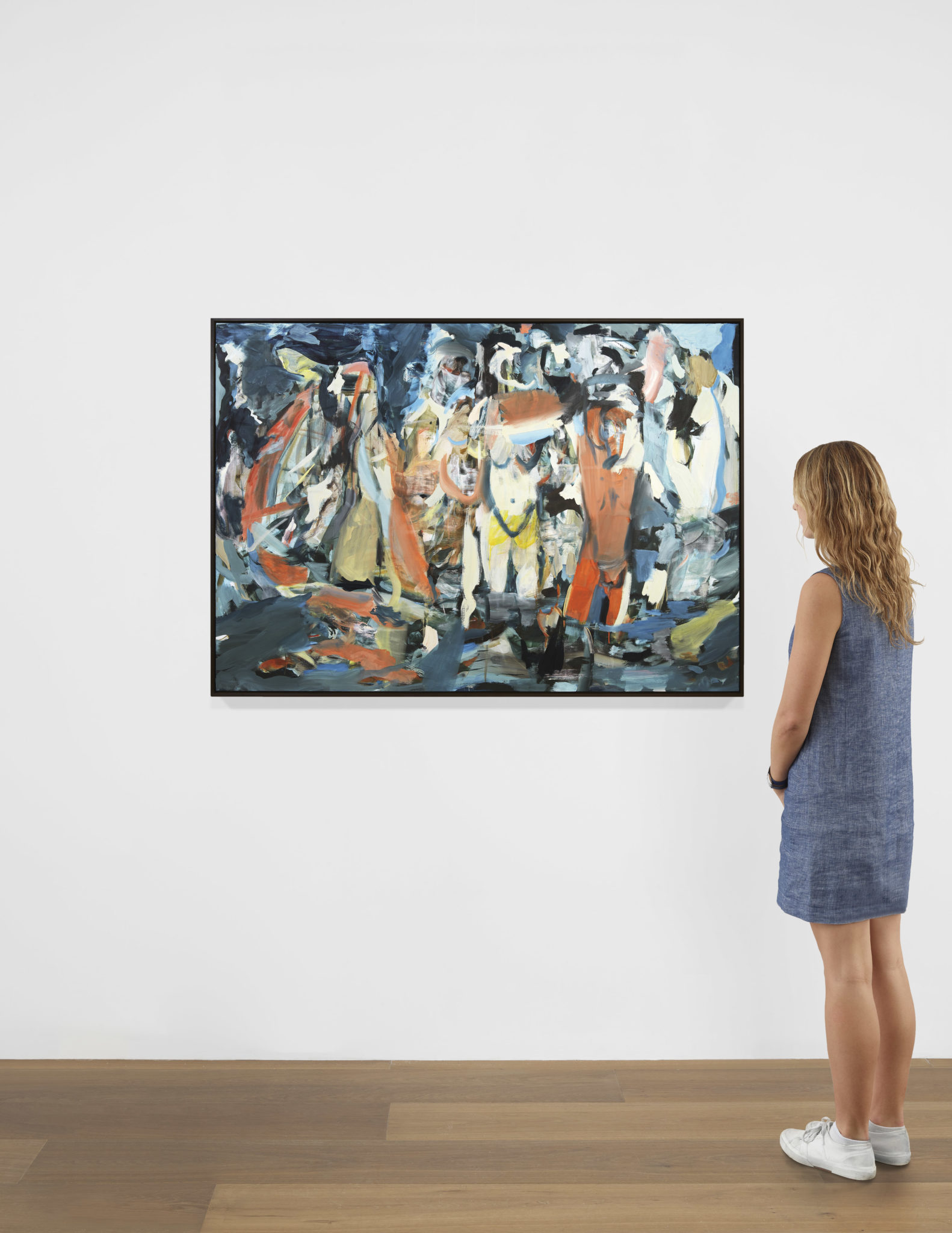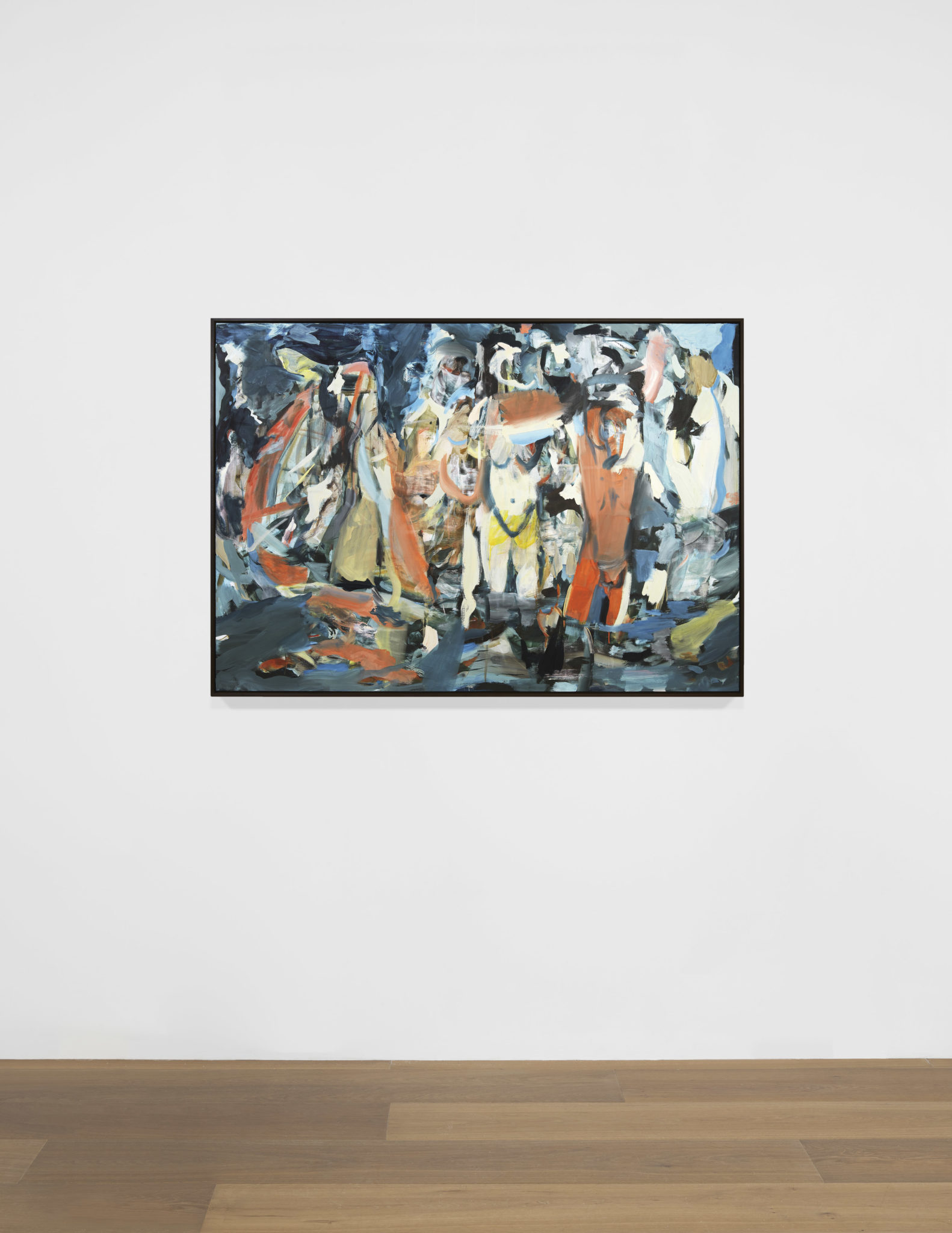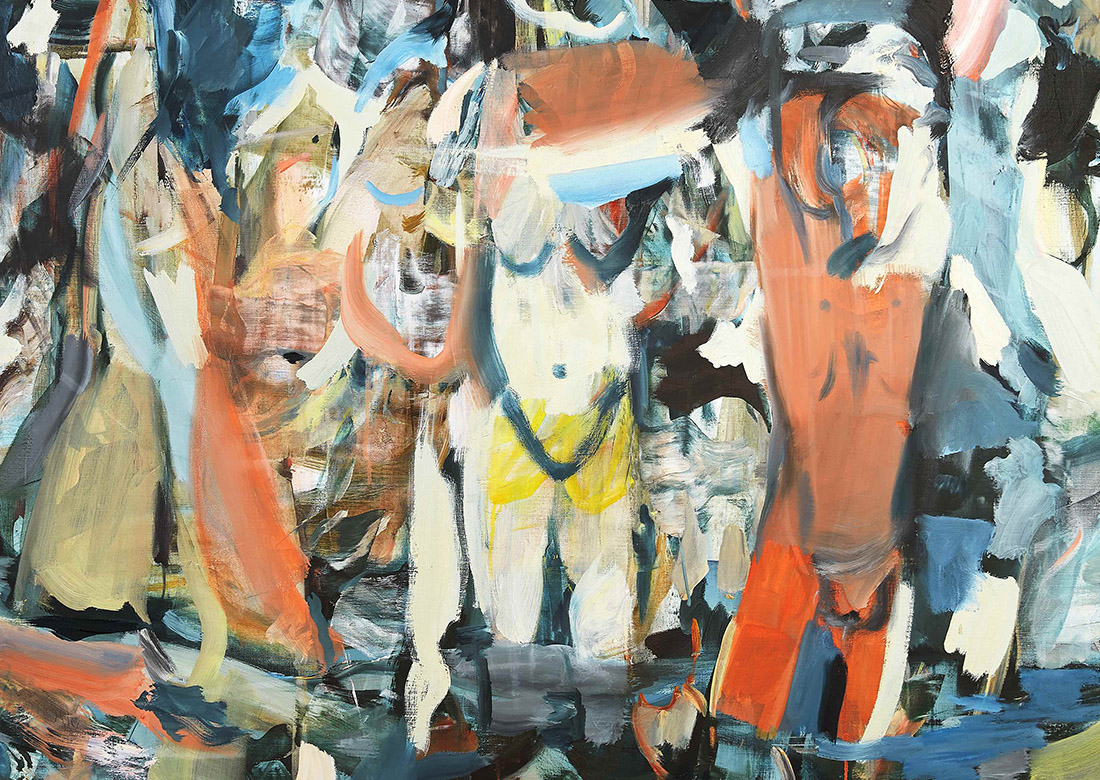Cecily Brown
Three Bathers, 2016–17
Oil on linen
37 x 53 inches (94 x 134.6 cm)
© Cecily Brown
I’ve never wanted to let go of the figure, but it keeps wanting to disappear. It’s always a fight to hold on. . . but it’s also about letting something move, slip away. I’m very open to accident.
—Cecily Brown
Art-historical references are integral to Cecily Brown’s practice, providing her with figures and constellations that she uses as “a kind of shorthand for human presence.” In Three Bathers (2016–17), she takes on the grand tradition of nudes bathing en plein air by modernist painters such as Paul Cézanne, Henri Matisse, Paul Gauguin, and André Derain. In Brown’s interpretation, she retains a central female nude with strong gestural lines marking out her torso and legs, appearing to be stepping into a body of water. The blurred jewel-like tones of blue and the sharper fleshy colors recall the palette of Gauguin’s Tahitian nudes. Abstraction and figuration move in and out of each other, creating a sumptuous scene where surface and depth are intertwined.
Three Bathers exemplifies what Brown has described as “retinal Rorschach”: taking hold of the act of viewing and revealing the ease with which the imagination works to create images. Beginning in the mid-1990s, Brown’s densely worked paintings have explored the allusive potential of abstraction, drawing on a rich lineage of Western masters such as Abstract Expressionist Willem de Kooning. In the present work, her blurring of paint across the surface is reminiscent of de Kooning’s landscapes of the 1960s. Since the early 2000s, Brown has moved away from the sexually explicit imagery that defined her early career into a broader engagement with art historical sources. Three Bathersrepresents a culmination in her dialogue with her forebears, and yet remains highly contemporary, at home in today’s “crowded visual world,” as Johanna Drucker has described. Brown’s interaction with history is up-close and intimate, while her seductive brushwork forestalls repetition, enticing viewers into a new space.




